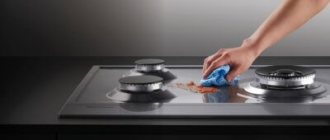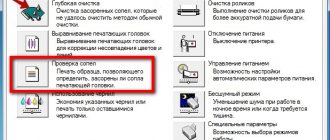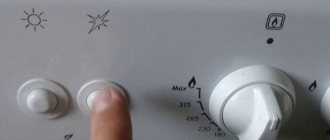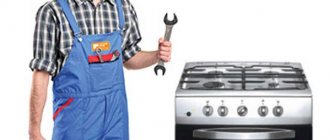One of the most necessary household appliances in the kitchen is the stove. Gas appliances used for cooking are reliable and easy to use. Caring for the working surface of the stove is a simple procedure, but cleaning the burners has some features and rules.
Ceramic hobs require special treatment. Read here how to clean it from carbon deposits.
Why do you need to clean the burners?
Although the burners on the stove are least susceptible to contamination, the problem of their weak combustion or a change in the color of the gas periodically arises. And if the stove is still old and unkempt, the flame may disappear altogether. The reason for this may be a weak fuel supply or dirty burner dividers or dirty nozzles.
When cooking food, it is not uncommon to flood the stove with boiling water, fat, boiled milk, etc. Not only the surface of household appliances suffers, but also the burners. Why do you need to periodically clean the dividers?
- So that there is no fat, food residues that would not burn along with the gas and would not emit an unpleasant odor.
- To prevent contamination from retaining gas at the outlet of the dividers.
- So that blockages do not lead to complete failure of kitchen equipment.
Top 5 cleaning chemicals for grease and carbon deposits
Synergetic belongs to the middle price category, equipped with a dispenser for ease of use and economical consumption.
Sanita is a quick-acting alkali-based product, suitable for all surfaces, without a pungent odor, and perfectly removes dirt and greasy deposits.
“Oven Cleaner”, Amway is an effective product with a thick consistency, has a pungent odor, lasts a long time, and belongs to the high price segment.
Bagi, Shumanit is a liquid or powder product for various types of surfaces, easy to use, effective, affordable, and has a pungent odor.
Cif is a universal product for many surfaces, better suited for fresh dirt and removing old grease, has a pleasant smell, and has a quick cleaning effect.
All household chemicals are available in several forms: liquid, gel, spray or powder. Liquid cleaners, as a rule, are used more economically because they are diluted in small quantities in water.
With the help of a spray, fat is removed more easily from hard-to-reach places. Gels are available with or without abrasive to protect surfaces from scratches. Powders are intended for hard surfaces that can withstand abrasive substances.
Stages of cleansing
The stove must cool down before cleaning if it is hot. Then, follow the sequential cleaning steps:
- Close the general gas valve and open the window for ventilation. This is necessary for safety reasons. Situations are different, so it's better to be safe.
- Remove the grate and other parts from the stove so that open dividers remain.
- Proceed to remove dirt from the burners and stove using any of the selected products.
- After complete cleaning, reinstall all removable parts. Check gas combustion.
Main causes of failure
Malfunctions and their causes:
- A burning smell appears when plugged in. In this case, you must first check the slab visually. To do this, turn it off from the power supply and inspect the burners. If the reason is accumulated and burnt food residues, remove them and rinse the surface well.
If the stoves are clean, but a burning smell still emanates from the equipment, then the problem may be a faulty wiring. You need to call a technician or try to repair it yourself.
- The heating element stops heating. The cause was the connecting wires or the burner. First, check the control parts, which often lose contact. If this does not help, you need to completely replace the heating element with a working one.
- Due to a broken switch, it is not possible to set the required heating temperature for the burner. The reason is the displacement of contacts, their disconnection.
- Problems with the coil are detected when the burner heats up poorly or is absent. The spiral may be damaged due to overheating, rupture, or moisture ingress.
- The oven may heat unevenly or may not reach the desired temperature. In this case, it's a matter of heating elements. Repair or replacement is necessary.
Important You can repair glass-ceramic stoves yourself if you carefully study the operating instructions and know the structure of the electric stove. Otherwise, you need to call a specialist at home
Methods for cleaning gas burners
In order not to spend money on purchasing special means for cleaning stubborn dirt, you can use traditional methods:
- Using table vinegar. Remove the burners from the stove. Disassemble them into two parts: the divider and the lid. Then, take a large saucepan, pour a liter of boiling water into it, pour in half a glass of table vinegar. Place the burners in the resulting liquid for half an hour. After that, remove the parts, rinse them in clean water, and wipe dry with a soft cloth. The dirt should come off completely. Put the burners in place and check them for serviceability.
- Using baking soda. It will certainly be found in any home. Baking soda copes especially well with stubborn greasy stains. Initially, remove the burners and wash them in a soapy, detergent-based solution to remove soot and deposits. Take 4 tablespoons of baking soda in a bowl and add water to make a thick paste. Using a sponge, apply the resulting mixture to the burners. Leave in this state for half an hour. Then use a toothbrush to clean all the gaps on the divider so that no dirt particles remain. Rinse them in clean water and dry them with a towel or napkin.
- Detergent for cleaning burners. Soaking parts in soapy water is another effective and inexpensive way to clean dirt from burners. Fill a bowl with two liters of hot water and dissolve 4 tablespoons of any dishwashing detergent. Place the removable parts of the burners in the resulting liquid for one hour. After the specified time, rinse the parts in clean water and wipe dry with a towel. Assemble the gas stove.
Cleaning the lids
It is recommended to clean the burner lids after each cooking. However, if contaminants remain on them, the following methods will help:
- Soak the lids for half an hour in a water solution of laundry soap. Then wipe them with a sponge. You will see that all dirt will come off easily.
- If there are any burnt food particles on the lids, you can steam them in a water bath in the same way as the burners. This will help get rid of even complex stains.
Cleaning nozzles on a gas stove
Poor combustion can be caused not only by clogged burner dividers, but also by dirty nozzles. Let's look at the step-by-step process of cleaning the nozzles on the stove.
- As when cleaning the burners, turn off the gas valve and open the window for ventilation.
- Remove the grate and all burner parts from the device.
- There will be empty bowls left on the stove. There will be small holes in the middle of these bowls. These are the injectors.
- To clean them, you will need a thin copper wire, a needle or a paper clip. Let's say you chose copper wire. Take it and insert it directly into the nozzle of the nozzle, deeper. Scroll the wire several times, move it up and down.
- After cleaning the nozzles, wipe the bowls and stove with soapy water. Put everything back together the way it was. Check combustion.
We recommend reading an article on how to clean a frying pan from carbon deposits at home.
Rules for using the oven
Usually, all problems with a gas oven begin at the moment when the owners stop properly caring for it. This does not apply to manufacturing defects, which can be detected before the warranty expires.
Before preparing any dish, you must thoroughly study the oven instructions and recipe. These are two components of a perfect dish.
To avoid breakdowns, follow the rules:
- call a gas service worker every year for an inspection;
- do not forget to check the oven before turning it on so as not to fry foreign objects;
- clean the oven after each use;
- To install the oven, call a professional, do not do it yourself.
Prepare baked goods only on an aluminum baking sheet or in special containers designed for this purpose.
Remember, working with gas is a high-risk activity; do not expose yourself and your loved ones to it. Take this issue seriously and use the help of professionals.
Adviсe
- Once a year, call a professional who will check the stove for serviceability of kitchen equipment and gas leaks.
- To prevent stubborn greasy stains on the stove, wipe it after each cooking, even if it seems to be clean.
- Do not use powdered cleaning agents to remove stains. They can get into the burner dividers and remain there. Use liquid gels or regular dishwashing detergent.
- To wash away stubborn grease, wet the surface of the stove with soapy water and leave to soak for 15-20 minutes. Then use a soft cloth to remove dirt and rinse with clean water.
Never use a hedgehog cleaner to clean surfaces.
- Once a week, thoroughly clean the entire stove, even though you wipe it down every day.
Using ammonia
For particularly difficult stains, use ammonia. But be careful! The vapors of this substance have a strong unpleasant odor and are quite toxic. Therefore, work in a well-ventilated area.
Place the grate, burners and lids in a trash bag and add 1/4 cup of ammonia. Tie the bag tightly and leave overnight. The next day, wash the slab parts with a sponge and water. Ammonia vapor perfectly dissolves even the most difficult stains.
Checking and cleaning the thermocouple of the solenoid valve
And the following situation probably happened to owners of gas stoves equipped with a gas control system. When you start to light the burner, you press the button and hold it - the flame burns, as soon as you remove your finger it immediately goes out. There is no need to immediately tear out your hair and call a specialist. First, just try cleaning the thermocouple. To be clear, a thermocouple is “the iron thing that sticks out next to the burner.” When it heats up, an electric current is generated, which then holds the magnetic valve in the pressed position and prevents it from closing the gas passage to the burner. If the gas goes out for any reason, the thermocouple quickly cools and the valve closes, preventing the gas from filling. Quite a convenient system. So, you need to take sandpaper and clean this metal pin from dirt, grease, oil, etc. This often helps. But if the problem cannot be solved in this way, then the thermocouple will have to be replaced, and here it would be better to trust a qualified specialist.
I hope that all the tips I have presented will help extend the life of your gas stove, but if you suddenly feel that there is a smell of gas in the apartment, do not tempt fate - turn off the gas supply valve to the gas stove and immediately call the emergency service. Firstly, there are specialists working there whose level will allow eliminating any gas leak, and secondly, these specialists are still working for free throughout the entire territory of our vast Motherland. And don’t forget to take care of the stove and wash and clean it regularly, because proper care is the key to its long service life.
What is it for?
Often, while cooking, you have noticed that the flame coming out of the burners burns weakly, changes color, or disappears. The problem most often occurs due to contamination of the burners and can lead to a complete cessation of operation of the stove.
To avoid damage to the device and stabilize gas combustion, the removable elements of the unit should be cleaned regularly .
ATTENTION! Uneven distribution of the flame when exiting the divider may indicate a malfunction of the stove itself, so be sure to consult with a gas specialist.
What to do if the gas flow from the burner is weak?
Poor combustion is most often caused by clogged injectors. If cleaning measures do not help, you need to seek professional help. A call to the specialist is required if:
- at maximum gas supply, the flame remains weak;
- the flame does not come out of all the holes in the nozzle;
- the fire goes out some time after the burner is ignited;
- the flames have an atypical color.
If the burner of a gas stove is thoroughly cleaned, the surface is washed, and the nozzles are cleaned, then combustion problems are associated with more serious problems, which only a gas service repairman can identify and eliminate.
Source
Useful video
This video will show you how to quickly and easily clean the burners of a gas stove:
When it comes to general cleaning of a gas stove, you should never ignore the burners and nozzles. The fact is that these structural elements also tend to become dirty and clogged, which subsequently leads to ineffective operation or even breakdown. Both household chemicals and folk recipes will help you cope with carbon deposits and blockages inside the burners of a gas stove, but it is important to understand them so as not to turn the appearance of the equipment into an unsightly state.
For what reasons does the oven go out?
When using gas ovens, problems with gas control are often encountered. To light the oven, you just need to bring the flame to the opening of the cabinet through which the fuel enters or use the auto-ignition; most modern models have this option.
A thermocouple is located next to the burner. If the flame goes out or does not light up at all, this means that the gas supply is blocked. The valve or thermocouple may need to be replaced. We discussed how to check their serviceability in the previous section.
Problems with the operation of a gas oven can arise due to the doors being too tight, resulting in a lack of oxygen.
First of all, you need to make sure that there is no blockage in the nozzle hole through which gas is supplied. Food particles often get into the stove part during cooking.
For cleaning you will need a soft thin wire. Using a rotating motion, insert it into the nozzle hole. It is undesirable to use stiff steel wire; you may end up with a “roaring” burner. A thin needle, which breaks easily, is also not suitable for this purpose.
Gas stove oven design. The position of the rack, baking tray and other baking or grilling accessories can be adjusted
The flame in the oven may also go out due to low gas pressure. This can be determined by the insufficient height of the flame crown; the fire may go out after some time. Poor combustion and poor gas supply may be due to the supply hose to the stove, which is pinched by something or bent. The hollow pipe is located behind the stove.
The gas oven also goes out when you release the button due to the tight fit of the oven door. You can get rid of the problem simply by increasing the access of oxygen to the oven.
Flame problems also arise for other reasons other than breakdowns.
Why does the oven in a gas stove often go out:
- Modern stoves have a gas control system installed. The sensor stops supplying gas if there is no increase in temperature. The regulator does not work immediately, so try holding the gas switch knob for about 15 seconds; to speed up the heating of the sensor and ignition of the oven, turn the knob to the maximum.
- Problems with igniting the oven may occur after washing the oven. Burner misalignment can be identified by an uneven orange flame. If the part is installed incorrectly, the oven begins to smoke.
- The gas control system reacts to a decrease in flame intensity when gas pressure drops in the pipeline, which shuts off the fuel supply. This situation is common when using gas in cylinders. The container needs to be refilled or replaced with a new one.
A weak oven burner flame may also be due to difficulty turning the knob. This can happen as a result of a jammed gas valve.
When checking the gas tap, you should pay attention to the remaining factory lubricant, sometimes this is the cause of the stove malfunction. If necessary, the part can be treated with lubricant: for old-style plates, LG-GAZ-41, Germeton, Klad-M, LS-II are suitable; in modern models it is better to use Molykote 1102 and Germethyl. It is necessary to disassemble it, clean it from blockages and lubricate it
If the tap is damaged, replace it with a new one.
It is necessary to disassemble it, clean it from blockages and lubricate it. If the tap is damaged, replace it with a new one.











